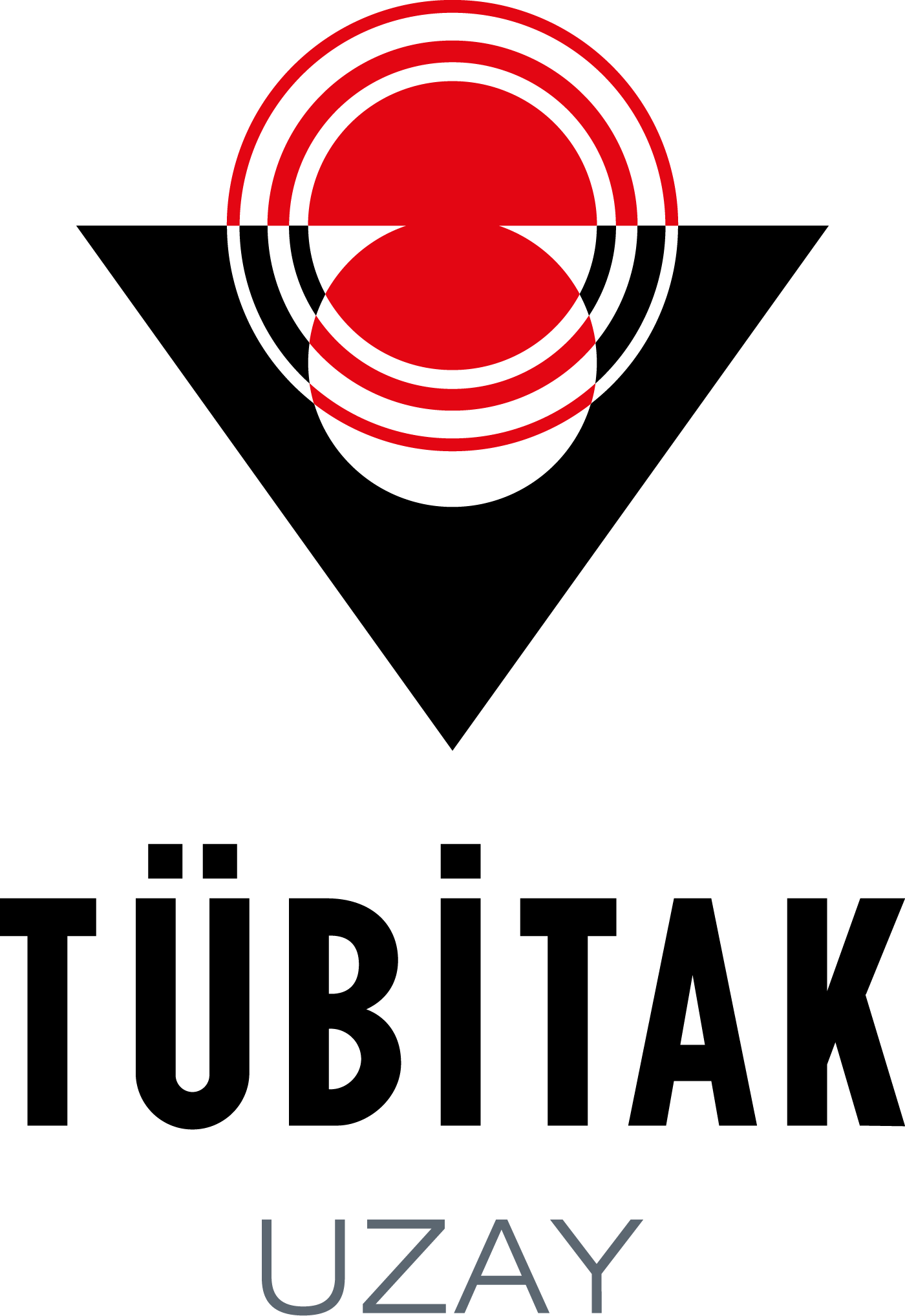UZAY
Communication Systems
KKS Antenna
(Global Positioning System Antenna)
The KKS Antenna is a piece of equipment within the Global Positioning System developed on the IMECE Satellite. It provides the following functions:
- It covers the E1, L2 and L5 frequency bands in GNSS systems.
- It has a wide operating frequency band and circular (RHCP or LHCP) polarization.
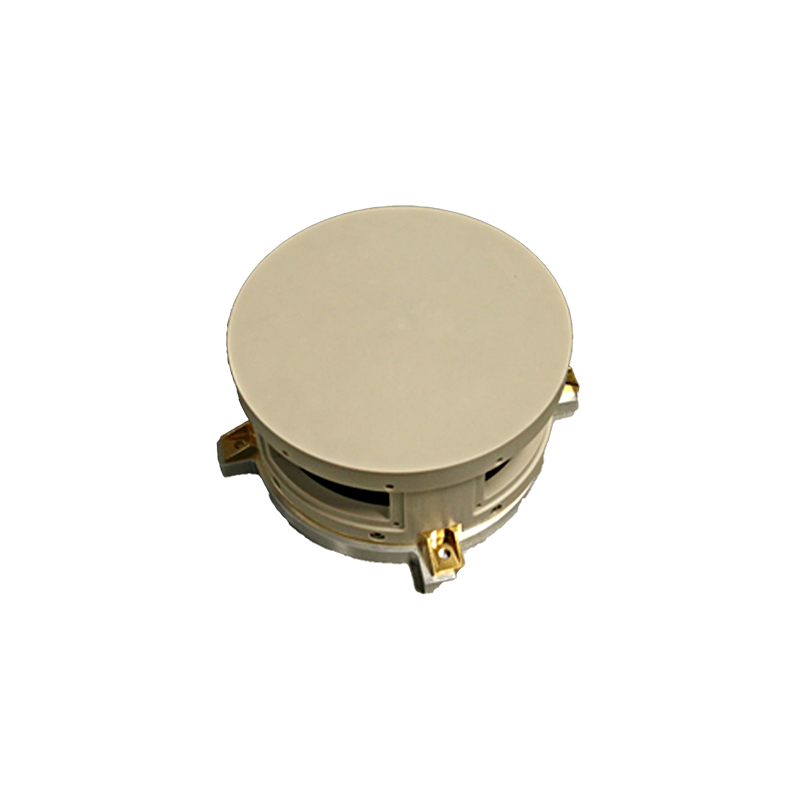
KKS Antenna Specifications
Main Features
KKS Antenna equipment is included as 2 pieces in the Global Positioning System equipment developed for the IMECE Satellite. The operating frequency band range is 1100-1600 MHz. It offers >7 dBiC gain at right-angle viewing angles. It is designed with circular polarization and has a protective radome.
Budget
Mass 0.490 kg
Size: 163 mm x 163 mm x 69 mm (Width x Length x Height)
Interfaces
RF
History / Platforms
IMECE, AYAP-1
Environments / Reliability
Thermal: -20°C to +50°C
Vibration
Shock
KKS LNA
(Global Positioning System Low Noise Amplifier)
The KKS LNA is a piece of equipment within the global positioning system developed on the IMECE Satellite and provides the following functions:
- It covers the E1, L2 and L5 frequency bands in GNSS systems.
- Provides over 18 dB gain in the E1, L2 and L5 frequency bands.
- It has noise figure values below 2 dB in the E1, L2 and L5 frequency bands.
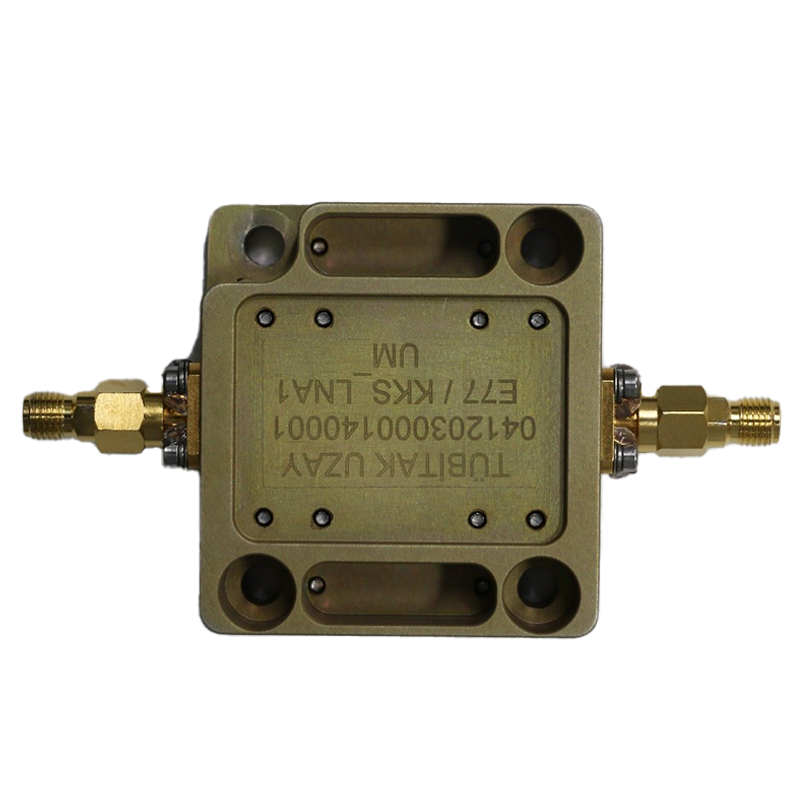
KKS LNA Features
Main Features
- The KKS LNA equipment is included as 2 pieces in the global positioning system equipment developed for the IMECE Satellite.
- It is located between the KKS Antennas and the KKS RF Power Distributor Splitter equipment.
- It receives the DC supply voltage it needs from the KKS RF Power Distributor Splitter equipment and filters the signal received from the KKS Antenna, amplifies it and transmits it to the following KKS RF Power Distributor Splitter equipment.
- It has its own DC voltage regulator.
- It has high gain with low noise figure and is 50 ohm system compatible at the input and output ports.
Budget
Mass 0.082 kg
Supply: 5V
Power: 0.6 W (nom)
Size: 60 mm x 52 mm x 20 mm (Width x Length x Height)
Interfaces
RF, DC
History / Platforms
IMECE, AYAP-1
Environments / Reliability
Thermal: -20°C to +50°C
Vibration
Shock
MIL-STD-461F EMC
KKS RF GDB
(Global Positioning System RF Power Distributor Splitter)
The KKS RF GDB is a piece of equipment within the global positioning system developed on the IMECE Satellite and provides the following functions
- Selects and activates which KKS LNA unit will be used to receive signals from the KKS equipment.
- Divides the signal strength from the selected GPS LNA equipment into 3 equal parts.
- Divided into 3 equal parts, it transfers the signal power to the KKS Electronic Unit.
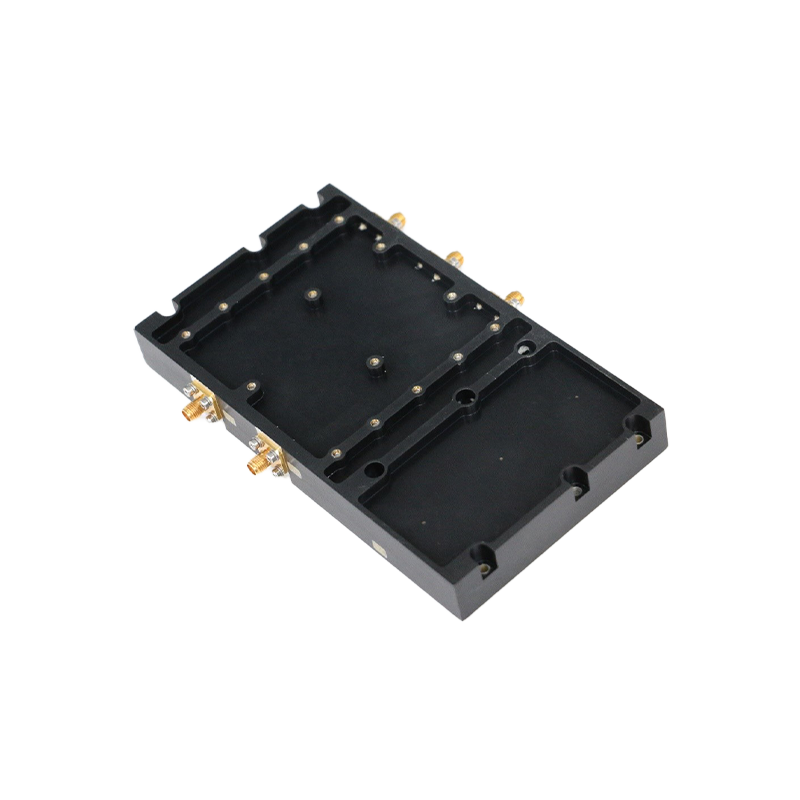
KKS RF GDB Specifications
Main Features
The KKS RF GDB equipment is part of the global positioning system equipment developed for the IMECE Satellite. It is located between KKS LNAs and KKS Electronic Unit equipment. It receives DC supply voltage from the KKS Electronic Unit equipment and feeds itself. It also feeds the KKS LNA that will receive the signal from the KKS Antenna and receives the signal. It divides the received signal power into 3 equal parts and transmits it to the following KKS Electronic Unit equipment. It has a DC voltage regulator in itself. It has 100 kRad resistant RF switch integration and is compatible with 50 ohm system on input and output ports.
Budget
Mass x,xx kg
Supply: 5V
Power: 0.25 W (nom)
Size: XX mm x YY mm x ZZ mm (Width x Length x Height)
Interfaces
RF, DC
History / Platforms
IMECE, AYAP-1
Environments / Reliability
Thermal: -20°C to +50°C
Vibration
Shock
MIL-STD-461F EMC
S-Band Transmitter
(Global Positioning System Low Noise Amplifier)
The S-Band Transponder Equipment is being developed for deep space missions and is a communication equipment that will perform space command/spacemetry communication and distance measurement functions. Thanks to its modular equipment structure, it can be adapted to different space platform requirements.
The S-Band Transmitter Equipment brings the following features to space cutting:
- Satellite/spacecraft-ground command/spacemetry communications compliant with CCSDS standards
- Distance measurement function compliant with ECSS-E-ST-50-02C standard
- Operating frequencies compliant with ITU radio regulations
- RS-422 and CAN data interfaces
- Modular architecture with independent Baseband, Low Noise Amplifier, RF Front End, Solid State RF Power Amplifier and Cavity filter units
- Safe architecture in space conditions with redundant structure and hardware protection features
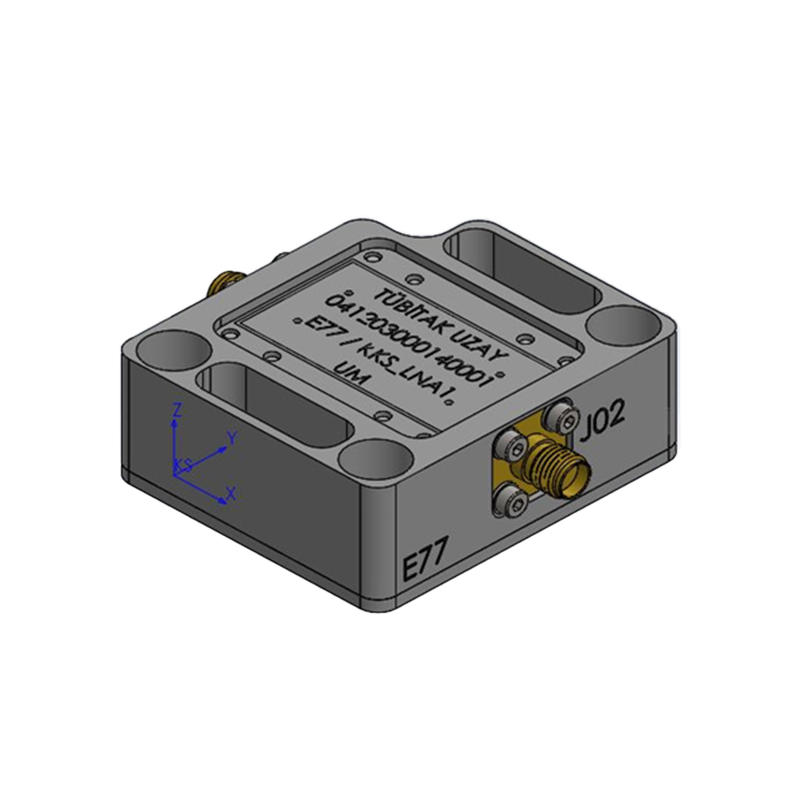
S-Band Transmitter Features
Main Features
- Operating Frequency Range:
Transmission Line 2200-2290 MHz
Receiving Line 2025-2120 MHz - Receiver Data Rate: Up to 100 kbps data rate
- Transmitter Data Rate:
In low data rate mode: Up to 1Mb/sec.
In high data rate mode: Up to 4 Mbps - Modulation Type:
Receiver PCM/BPSK/PM, SC-BPSK
Transmitter: PCM/BPSK/PM, PCM/QPSK/PM, SC-BPSK, SC-QPSK - Receiver Noise Figure: <4 dB (-20°C to +50°C)
- Transmitter RF Output Power: 4W (-20°C to +50°C)
- Operating Modes: Telecommute/telemetry only, telecommute/telemetry + distance measurement, distance measurement only
- Coherent and Non-coherent operation
Budget
Supply: 28V nominal (16V - 40V Voltage input range)
Power Consumption: <30W@25C (Receiver and transmitter operating simultaneously)
Size: 304 mm x 216 mm x 96 mm (Width x Length x Height)
Mass 4 kg
Interfaces
Control: CAN
Data RS-422
RF: SMA, 50 Ohm
History / Platforms
AYAP-1
Environmental / Reliability
Thermal:-20°C to +50°C
Vibration
Shock
EMI/EMC: MIL-STD-461F
Lifespan 3 years
S-Band Transceiver
(Global Positioning System RF Power Distributor Splitter)
S-Band Transceiver Equipment is a communication equipment for low-altitude satellites that provides command/spacemetry communication between the satellite and the ground. Its main task is to perform uplink/downlink communication physical layer functions and to provide command and measurement functions within the on-board satellite operation. Thanks to its modular equipment structure, the S-Band Transceiver Equipment can be adapted to different space platform requirements.
S-Band Transceiver Equipment brings the following features to the satellite space segment:
- Satellite-ground space command/spacemetry communication compliant with CCSDS standards
- Operating frequencies compliant with ITU radio regulations
- RS-422 and CAN data interfaces
- Modular architecture with independent Baseband, RF Frontcoat, Solid State RF Power Amplifier and Cavity filter units
- Safe architecture in space conditions with redundant structure and hardware protection features
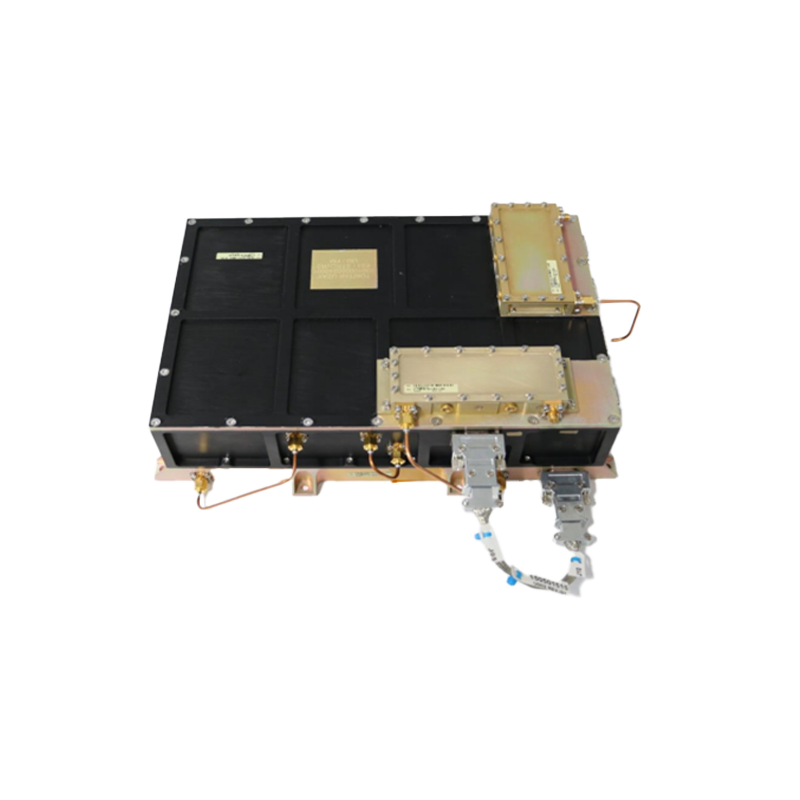
S-Band Transceiver Specifications
Main Features
- Operating Frequency Range:
Transmission Line 2200-2290 MHz
Receiving Line 2025-2120 MHz - Data Rates:
Receive Data Rate: 40 kbps.
Transmit Data Rate: 50 kbps and 2 Mbps sending - Modulation Type: SC-BPSK
- Channel Coding: RS (223,255) for transmit line
- Receiver Noise Figure: <4 dB (-20°C to +50°C)
- Transmitter RF Output Power: 4W (-20°C to +50°C)
- Receiver sensitivity -107 dBm@1E-6 BER
- Input Dynamic Range: -60dBm to -107dBm
- Carrier Frequency Capture Capability: ±50KHz
Budget
Supply: 28V nominal (16V - 40V voltage input range)
Power Consumption: <30W@25C (Receiver and transmitter operating simultaneously)
Size: 304 mm x 216 mm x 96 mm (Width x Length x Height)
Mass 4 kg
Interfaces
Control: CAN
Data RS-422
RF: SMA, 50 Ohm
History / Platforms
IMECE
Environmental / Reliability
Thermal: -20 to +50 C
Vibration
Shock
EMI/EMC: MIL-STD-461
Lifespan 7 years
SRX-YA
(S-Band Receiver Patch Antenna)
The S-Band Receiver Patch Antenna is an equipment used for S-Band communication on the IMECE Satellite and provides the following functions:
- It is used as a receiving antenna in the upward S-Band communication between the TM/TC Subsystem and the Ground Station.
- It has maximum gain in boresight and right-handed circular polarization (RHCP).
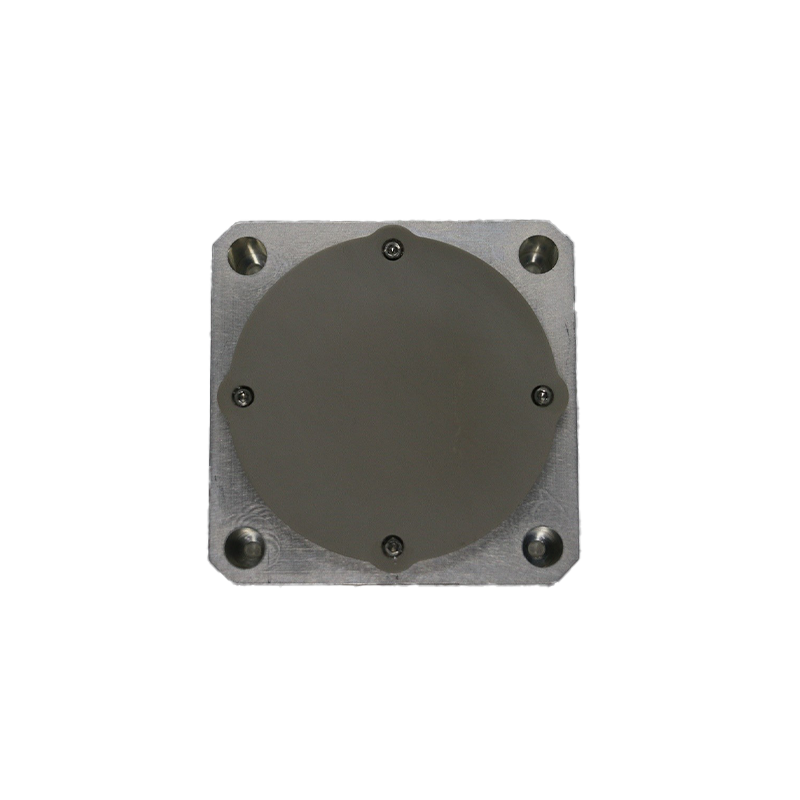
SRX-YA Features
Main Features
- The S-Band Receiver Patch Antenna is used as the receiving antenna for upward S-Band communication between the TM/TC Subsystem and the Ground Station on the IMECE Satellite.
- The operating frequency is in the range 2025-2110 MHz.
- It has maximum gain (6 dBiC) in boresight and circular polarization (LHCP or RHCP) with a protective radome.
- Axial ratio (<1 dB) and back reflection loss (<-10 dB) bandwidth is 25 MHz.
- >0 dBiC gain in the 120 degree elevation angle range.
Budget
Mass 0.177 kg
Size: 92 mm x 92 mm x 27 mm (Width x Length x Height)
Interfaces
RF
History / Platforms
IMECE, AYAP-1
Environments / Reliability
Thermal: -50°C to +100°C
Vibration
Shock
SRXYH
(S-Band Receiver Redundancy Ring)
The S-Band Receiver Redundancy Ring is the configuration part located between the S-Band Receiver Patch Antennas and the S-Band Receiver Unit on the IMECE Satellite and provides the following functions:
- The S-Band Receiver Redundancy Ring transmits the signal from the ground station received by the S-Band Receiver Patch Antennas to the S-Band Receiver Unit.
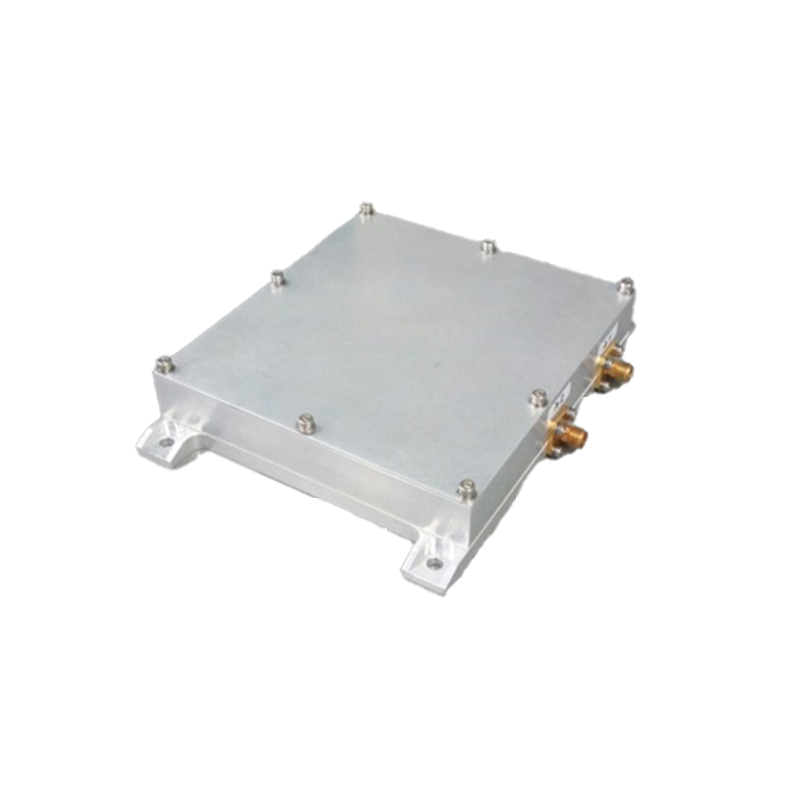
SRXYH Features
Main Features
The S-Band Receiver Redundancy Ring is a completely passive configuration element located between the S-Band Receiver Patch Antennas and the S-Band Receiver Unit on the IMECE Satellite. The function of the S-Band Receiver Redundancy Ring is to send the RF signal from the ground station, received by the S-Band Receiver Patch Antennas, to the S-Band Receiver Unit. The S-Band Receiver Redundancy Ring equipment has RF connections with the S-Band Receiver Unit and the S-Band Receiver Patch Antennas. The operating center frequency of the S-Band Receiver Redundancy Ring is 2061 MHz.
Budget
Mass 0.297 kg
Size: 131 mm x 146 mm x 27 mm (Width x Length x Height)
Interfaces
RF
History / Platforms
IMECE, AYAP-1
Environments / Reliability
Thermal: -20°C to +50°C
Vibration
Shock
STX-QFH
(S-Band Transmitting QFH Antenna)
The S-Band Transmitter QFH Antenna is the equipment used for S-Band communication on the IMECE Satellite and provides the following functions:
- Transmits the signals transmitted from the S-Band Transmitter equipment to the ground station.
- The S-Band Transmitting QFH Antenna has left-hand circular polarization (LHCP).
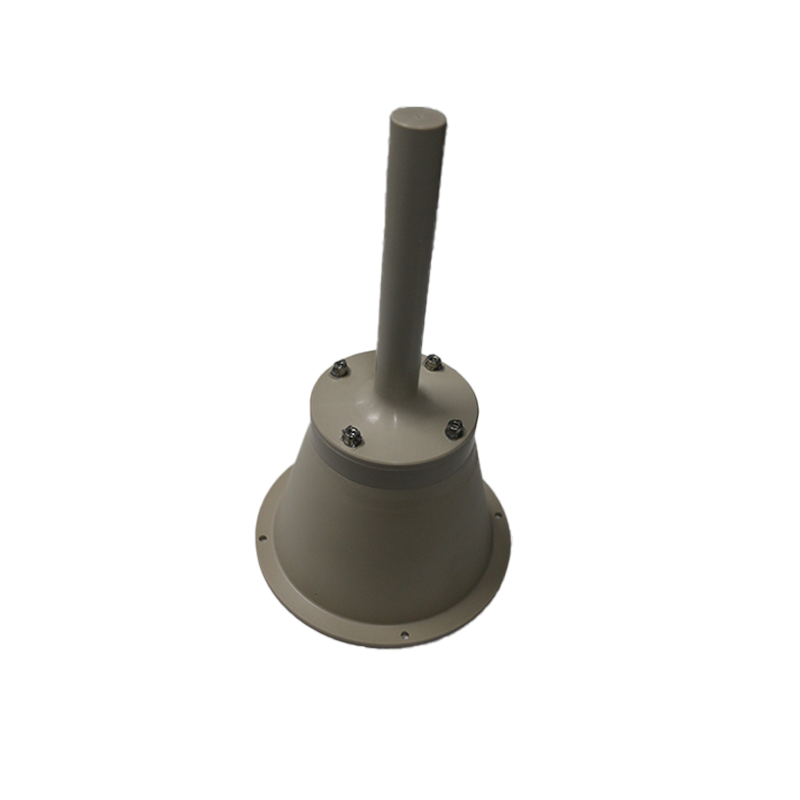
STX QFH Specifications
Main Features
- The S-Band Transmitter QFH Antenna is used as a transmitter antenna on the IMECE Satellite for downward S-Band communication between the TM/TC Subsystem and the Ground Station.
- The operating frequency is in the range 2200-2290 MHz.
- It has a co-flux radiation pattern, maximum gain (5 dBiC) at specified elevation angles and circular polarization (LHCP or RHCP) with a protective radome.
Budget
Mass 0.348 kg
Size: 149 mm x 149 mm x 253 mm (Width x Length x Height)
Interfaces
RF
History / Platforms
IMECE, AYAP-1
Environments / Reliability
Thermal -50°C to +100°C
Vibration
Shock
STX-YA
(S-Band Transmitting Patch Antenna)
The S-Band Transmitter Patch Antenna is an equipment used for S-Band communication on the IMECE Satellite and provides the following functions:
- It is used as a transmitting antenna in the downward S-Band communication between the TM/TC Subsystem and the Ground Station.
- It has maximum gain in boresight and left-handed circular polarization (LHCP).

STX-YA Specifications
Main Features
- The S-Band Transmitter Patch Antenna is used as a transmitter antenna on the IMECE Satellite for downward S-Band communication between the TM/TC Subsystem and the Ground Station.
- The operating frequency is in the range 2200-2290 MHz.
- It has maximum gain (6 dBiC) in boresight and circular polarization (LHCP or RHCP) with a protective radome.
- Axial ratio (<1 dB) and back reflection loss (<-10 dB) bandwidth is 25 MHz.
- >0 dBiC gain in the 120 degree elevation angle range.
Budget
Mass 0.168 kg
Size: 92 mm x 92 mm x 27 mm (Width x Length x Height)
Interfaces
RF
History / Platforms
IMECE, AYAP-1
Environments / Reliability
Thermal: -50°C to +100°C
Vibration
Shock
STXYH
(S-Band Transmitter Redundancy Ring)
The S-Band Transmitter Redundancy Ring is the configuration part located between the S-Band Transmitter Patch Antenna, S-Band Transmitter QFH Antenna and S-Band Transmitter Unit on the IMECE Satellite and provides the following functions:
- The S-Band Transmitter Redundancy Ring allows the RF signal from the S-Band Transmitter Unit to be split between the S-Band Transmitter Patch Antenna and the S-Band Transmitter QFH Antenna in certain proportions.
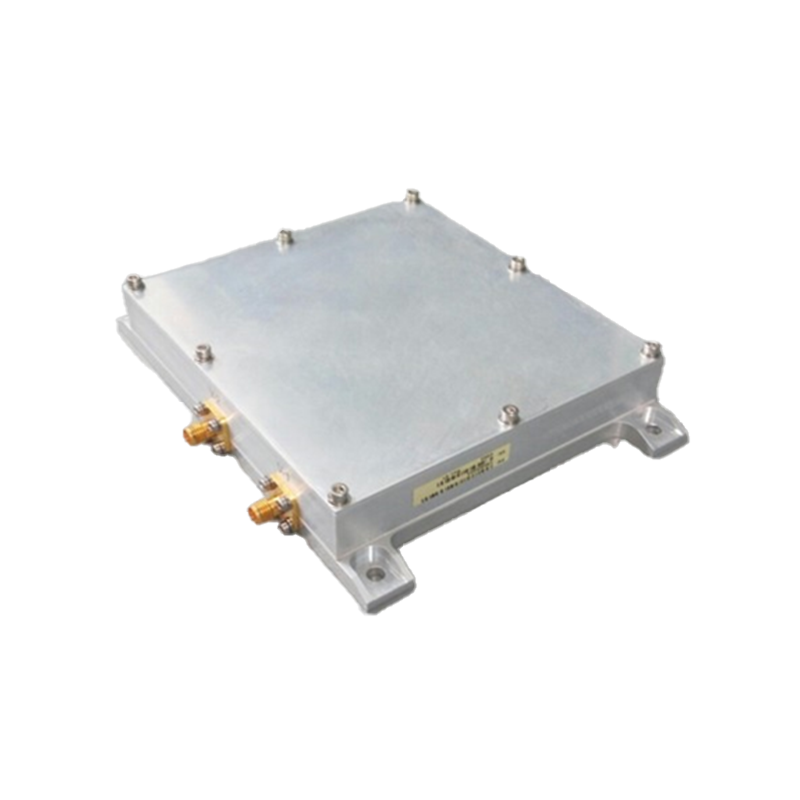
STXYH Properties
Main Features
- The S-Band Transmitter Redundancy Ring is a configuration part consisting of completely passive elements located between the S-Band Transmitter Patch Antenna, S-Band Transmitter QFH Antenna and S-Band Transmitter Unit on the IMECE Satellite.
- The role of the S-Band Transmitter Redundancy Ring is to ensure that the power of the RF signal from the S-Band Transmitter Unit is divided between the S-Band Transmitter Patch Antenna and the S-Band Transmitter QFH Antenna in certain proportions.
- The S-Band Transmitter Redundancy Ring equipment has RF connections with the S-Band Transmitter Unit, S-Band Transmitter Patch Antenna and S-Band Transmitter QFH Antenna.
- The S-Band Transmitter Redundancy Ring operating frequency range is 2200 MHz to 2290 MHz.
Budget
Mass 0.293 kg
Size: 131 mm x 146 mm x 27 mm (Width x Length x Height)
Interfaces
RF
History / Platforms
IMECE, AYAP-1
Environments/Reliability
Thermal: -20°C to +50°C
Vibration
Shock
X-Band Transmitter
(10Mb/sec.)
The X-Band Transmitter Equipment is a communication equipment with 5 Mbps and 10 Mbps data rate options developed for deep space missions. Its mission is to transmit payload data from the spacecraft to the ground station on Earth. Thanks to its modular equipment structure, the X-Band Transmitter Equipment can be adapted to different space platform requirements.
X-Band Transmitter Equipment brings the following features to the satellite space segment:
- RF communication compliant with CCSDS standards (up to 10Mb/s data rate)
- Operating frequencies compliant with ITU radio regulations
- CAN, MIL-STD1553B and LVDS interfaces
- Modular architecture with independent Baseband, Frequency Upconverter, Local Oscillator and Solid State RF Power Amplifier units
- Safe architecture in space conditions with redundant structure and hardware protection features
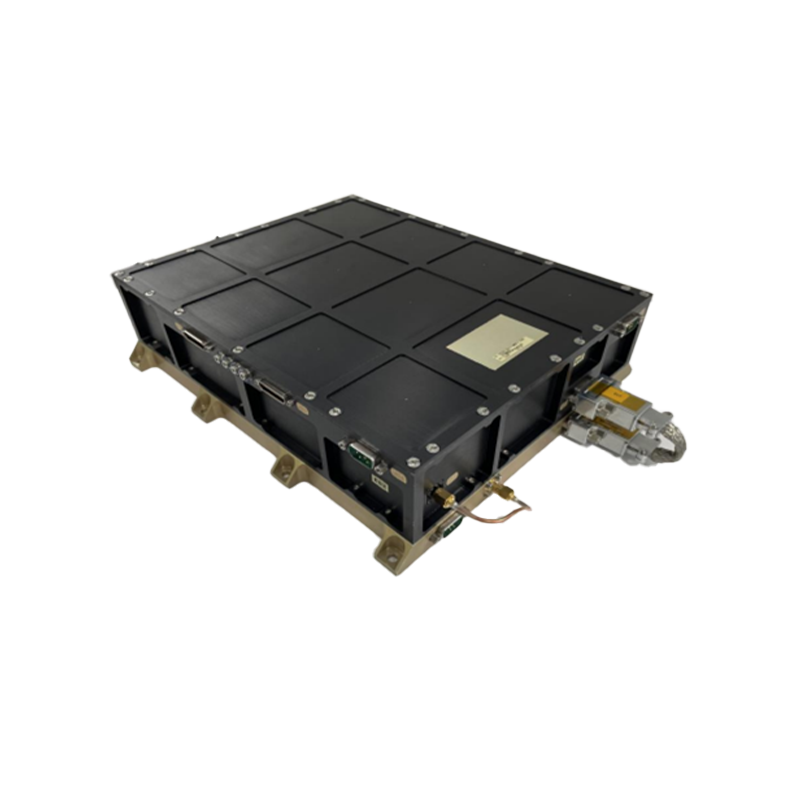
X-Band Transmitter Specifications
Main Features
- Operating Frequency Range: 8450-8500 MHz
- Data Rate: 5 to 10 Mbps.
- Modulation Type: OQPSK
- Channel Coding: RS (223,255), CC (7,1/2), CC (7,7/8)
- RF Output Power: 10W
Budget
Supply: 28V nominal (20V - 36V Voltage input range)
Power Consumption: <65W@25C
Size: 290 mm x 260 mm x 80 mm (Width x Length x Height)
Mass 4 kg
Interfaces
Control: CAN
Data: LVDS
RF: SMA, 50 Ohm
History / Platforms
AYAP-1
Environments / Reliability
Thermal:-20°C to +50°C
Vibration
Shock
EMI/EMC: MIL-STD-461F
Lifespan 5 years
X-Band Transmitter
(100 Mbps)
X-Band Transmitter Equipment is a high data rate communication equipment developed for low altitude satellites. Its mission is to transmit payload data from the satellite to the ground station at high data rate. Thanks to its modular equipment structure, the X-Band Transmitter Equipment can be adapted to different space platform requirements.
X-Band Transmitter Equipment brings the following features to the satellite space segment:
- High-speed RF communication compliant with CCSDS standards (100 Mbps)
- Operating frequencies compliant with ITU radio regulations
- CAN and Spacewire interfaces
- Modular architecture with independent Baseband, Frequency Upconverter, Local Oscillator and Solid State RF Power Amplifier units
- Safe architecture in space conditions with redundant structure and hardware protection features
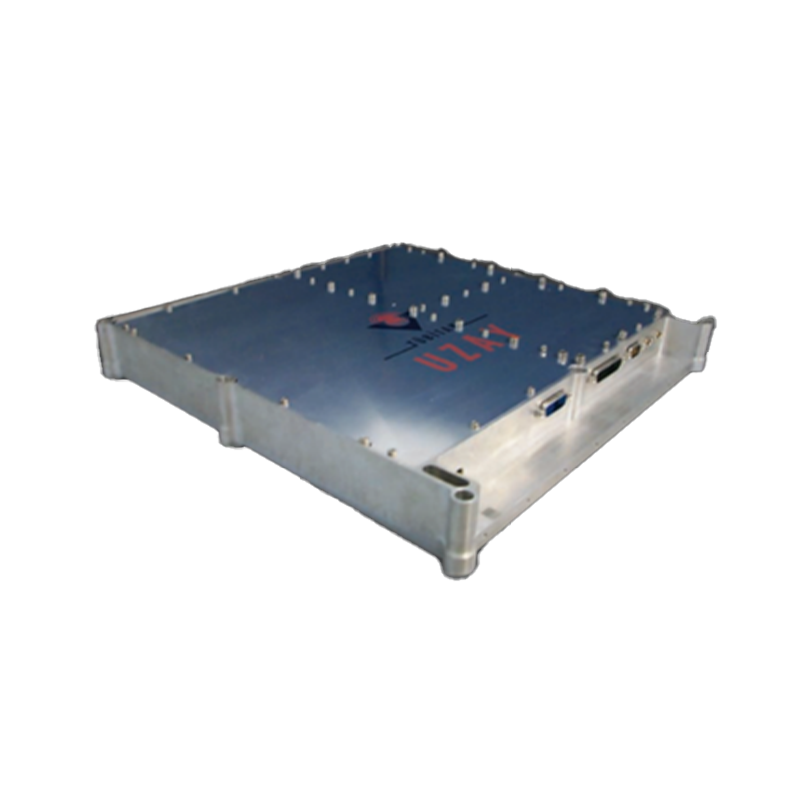
X-Band Transmitter Specifications
Main Features
- Operating Frequency Range: 8025-8400 MHz
- Data Rate: 100 Mbps.
- Modulation Type: OQPSK
- Channel Coding: RS (223,255), CC (7,1/2)
- RF Output Power: 10W
Budget
Supply: 28V nominal (20V - 36V Voltage input range)
Power Consumption: <65W@25C
Size: 290 mm x 260 mm x 80 mm (Width x Length x Height)
Mass 4 kg
Interfaces
Control: CAN
Data: Spacewire
RF: SMA, 50 Ohm
History / Platforms
RASAT, GOKTURK-2, IMECE
Environmental / Reliability
Thermal: -20°C to +50°C
Vibration
Shock
EMI/EMC: MIL-STD-461
Lifespan 7 years
X-Band Transmitter
(320 Mbps)
X-Band Transmitter Equipment is a high data rate communication equipment developed for low altitude satellites. Its mission is to transmit payload data from the satellite to the ground station at high data rate. Thanks to its modular equipment structure, the X-Band Transmitter Equipment can be adapted to different space platform requirements.
X-Band Transmitter Equipment brings the following features to the satellite space segment:
- High-speed RF communication compliant with CCSDS standards (320 Mbps)
- Operating frequencies compliant with ITU radio regulations
- CAN, MIL-STD1553B and LVDS interfaces
- Modular architecture with independent Baseband, Frequency Upconverter, Local Oscillator and Solid State RF Power Amplifier units
- Safe architecture in space conditions with redundant structure and hardware protection features

X-Band Transmitter Specifications
Main Features
- Operating Frequency Range: 8025-8400 MHz
- Data Rate: 320 Mbps (Dual Channel)
- Modulation Type: OQPSK/QPSK
- Channel Coding: RS (223,255), CC (7,1/2), CC (7,7/8)
- RF Output Power: 7W (can be increased up to 10W)
Budget
Supply: 28V nominal (16V - 40V voltage input range)
Power Consumption: <56W (-20°C to +50°C)
Size: 290 mm x 260 mm x 80 mm (Width x Length x Height)
Mass: 4.06kg
Interfaces
Control: CAN, MIL-STD1553B
Data: LVDS
RF: SMA, 50 Ohm
History / Platforms
IMECE
Environments / Reliability
Thermal: -20°C to +50°C
Vibration
Shock
EMI/EMC: MIL-STD-461F
Lifespan 7 years
XTX-YOA
(X-Band Transmitter Steerable Antenna)
The Electromechanical Steerable Antenna System is a product of the latest interdisciplinary technologies and engineering. It increases the Effective Isotropic Radiated Power (EIRP) and reduces transmitter power consumption. It provides the following functions:
- High data rate transmission on LEO satellite platforms
- Download payload data from earth observation satellite platforms
- Use in inter-satellite communication missions
- Ability to move angularly in two axes of rotation
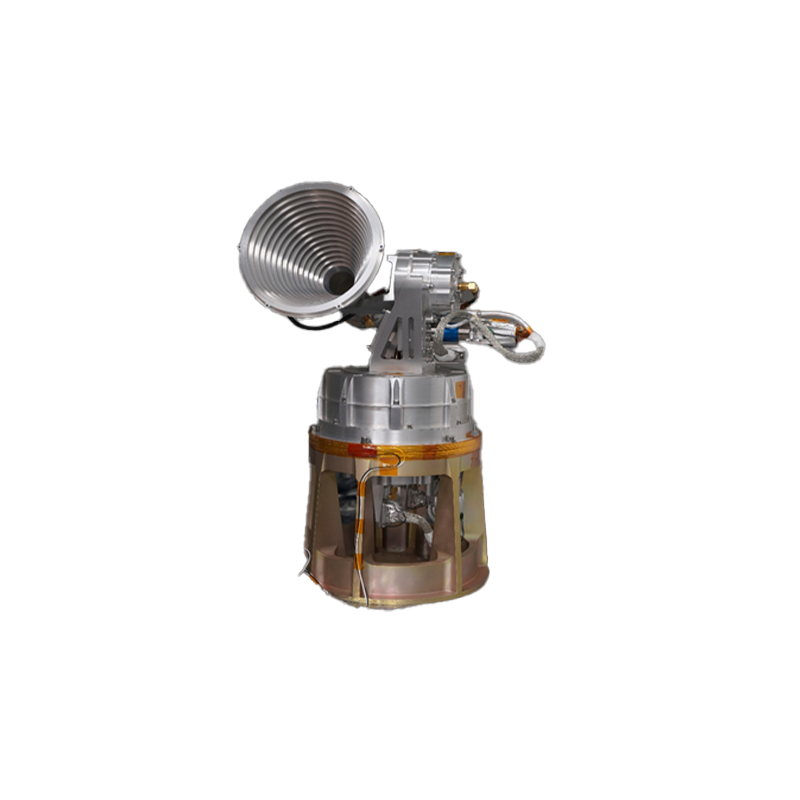
XTX-YOA Features
Main Features
- Operating frequencies are in the range of 8000-8400 MHz.
- Thanks to the steering mechanism, the ground station can be guided with high orientation accuracy (<0.50) and angular resolution (0.0030) values without any RF loss.
- High gain (<16.4 dBiC) symmetrical and low cross-polarized radiation pattern is achieved.
- Axial ratio values are below 1 dB along the vertical viewing angle and the operating band.
- Angular velocity <250/sec., ±270 at azimuth angles0 and elevation angles ±1100 values.
- Conforms to conductive emission, conductive susceptibility, radiated emission, radiated susceptibility tests such as CE101, CE102, CS101, CS114, CS115, CS116, RE102, RS103 according to MIL-STD-461F.
Budget
Supply: 28V irregular
Power: 6.15W (nom), 8.3W (max)
Mass: 5 kg, ±%5 (with antenna)
Dimension (Mechanism): 192 mm x 292 mm x 440 mm (Width x Length x Height)
Dimension (Drive Module): 165 mm x 257 mm x 58 mm (Width x Length x Height)
Interfaces
RS-422
CAN
History/Platforms
IMECE
Environmental/Reliability
Thermal: -20°C to +50°C
Vibration
Shock
EMI/EMC: MIL-STD-461
Lifetime: +5 years (more than 21,000 total cycles)
TXTX Antenna
(X-Band Transmitter Coherent Radiation Pattern Antenna)
The TXTX Antenna is a medium gain, cross dipole antenna with coherent radiation pattern for the IMECE Satellite. It provides the following functions:
- Medium gain for LEO satellite platforms and X-Band Transmitters
- Download payload data from satellite platforms on earth observation satellites
- With circular (LHCP or RHCP) polarity
- It has a coherent radiation pattern

TXTX Antenna Specifications
Main Features
TXTX Antenna is a medium-gain product that supports the X-Band Transmitter System developed for the IMECE Satellite. The operating frequency band range is 8000-8400 MHz. It has a gain of 4-7 dBiC at specified elevation angles. It is designed with circular polarization (LHCP or RHCP) and has a protective radome.
Budget
Mass 0.11 kg
Size: 172 mm x 172 mm x 29 mm (Width x Length x Height)
Interfaces
RF
History / Platforms
IMECE, AYAP-1
Environments / Reliability
Thermal: -50°C to +100°C
Vibration
Shock


